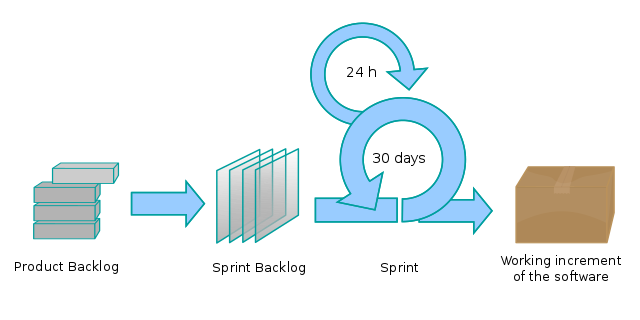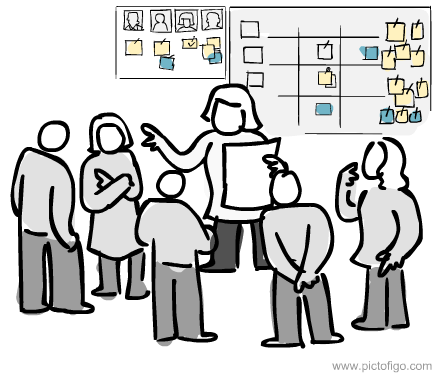To be a successful Product Manager, you need to know Scrum. The top benefits of Scrum include defined work stream, excellent resource utilisation, etc.
Speaking of excellence, do you know what makes Elon Musk such a great Product Manager?
Background
Scrum is at the heart of the Agile Methodology. Staying agile is critical for product professionals. And there’s a good reason for it. Agile simply helps deliver better products. This is a good opportunity to remember the differences between Agile and Waterfall.
If you are a Product Manager, you already know what scrum is. You must have definitely worked with the scrum system. However, understanding its key benefits will help you become more aware of the intricacies. This would also help you become product agnostic.

Before proceeding further, do you have all the necessary Product Manager skills?
Scrum Definition
Before moving on to the benefits, let us first go over the definition of scrum.
Scrum is an agile methodology that emphasizes sustainable development of requirements.
A scrum team generally consists of 10 or fewer members, including developers, a scrum master and a product owner.
A scrum team works on the product backlog. An item can be entered in to the product backlog if it meets the “Definition of Ready (DoR)”.
A feature is considered DoR if the technical grooming has been done and it is ready to be picked up for development.
Subsequently, the feature picked up in a backlog must meet the “Definition of Done (DoD)” before it can be removed from the feature backlog.
A feature is considered DoD when all the acceptance criteria for a feature specified at the start of the sprint have been fulfilled.

Top 15 Benefits of Scrum
What is scrum? What are the scrum values? Let us go over the full list of top 15 benefits of Scrum –
- Defined Work Steam – Before a sprint starts, tasks are already groomed
- Excellent Resource Utilisation – Since tasks are already groomed, developers don’t waste time during the sprint
- Seamless integration with the Jira ecosystem – Widely understood tool
- Defined feedback structure – Developers get just enough time to showcase their work without interruptions
- Sprint Retrospectives – Internal team opportunity to introspect and improve (don’t forget to communicate like a boss PM)
- Advantage of Scrum Master – Of all scrum roles, the scrum master role is the most important as they are responsible for all deliverables
- Sprint Reviews – External review where all stakeholders, including customers, can provide feedback
- Better focus on Product Backlog – During development phase, Product Managers get the opportunity to plan for the next sprint
- Enhanced Team Structure – Developers form Scrum Teams, with each team focussed on a specific type of coding
- PI Divided into Sprints – Feature level work broken into clear user stories
- Money and Time Savings – Since there are no constant scope changes
- Scrum Ceremonies and Scrum Events – Provides many forums like weekly scrum meeting, daily standup meeting, scrum of scrums, etc to cover all scrum topics and cover all scrum questions to ask
- Simple – Also a part of the top 15 benefits of Kanban (remember the KISS principle)
- Scrum Team Lead – Works in tandem with Scrum Masters and Product Managers (but you should be clear about Product Manager vs Product Owner and Product Manager vs Project Manager)
- Quality of Work – Developers get quality time to deliver quality products
Scrum Team
A scrum team is at the heart of the scrum agile methodology.
A scrum master usually leads a scrum team. The scrum master works in close coordination with the tech lead and the product team to work on the product backlog.

The different scrum ceremonies are all coordinated by the scrum master and the product team.
For example, a daily stand up should not be scheduled by a developer or tech lead. The scrum master should ideally schedule these.
It is important to free the developers from these tasks of managing the process and the product.
I also want to bring up another important point.
The scrum team unit takes time to develop a great working relationship.
Frequent changes can lead to a significant loss of productivity. For example, shuffling around developers from one scrum team to another scrum team is counter productive. Try to minimize these changes.
Scrum vs Kanban
The choice between Scrum and Kanban is an evergreen debate. There is no one size fits all approach here.
Both methodologies have their pros and cons. What works for one team may not necessarily work for another team.
At the end of the day, as Product Manager, you need to decide which framework works best for your development cadence.
I recommend that you also check out the top 15 benefits of Kanban.
Conclusion – Benefits of Scrum
In addition to the above, you also need to have a good strategy in place. Strategies such as Google’s OKR Framework can immensely help you to identify the right opportunities. Learn how to grab opportunities like Warren Buffett!
You should now have a fairly good idea of the purpose of scrum and the scrum methodology. The benefits of agile scrum are immense. But, you can also choose to follow the Kanban system. Both follow the agile values. But remember to use the correct product management tools. There are also a few specific scrum software available out there, but I don’t think they are required.
You can also check out the scrum guide and the scrum artifacts.
It ultimately depends on your particular company and culture. Both Scrum and Kanban have their own advantages and disadvantages. The important thing is that you make a plan and stick to it.
Sticking to a plan is all the more important during situations when people have to work from home.
Follow me on Twitter for the latest updates.
Do subscribe to my monthly newsletters on how to become a winning Product Manager.



